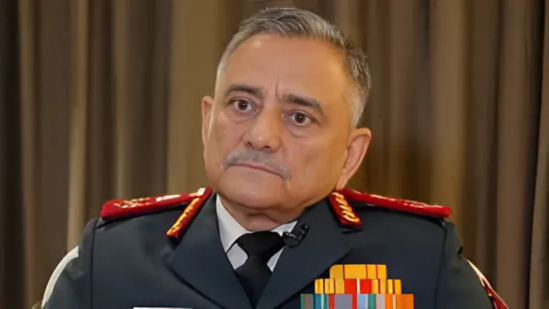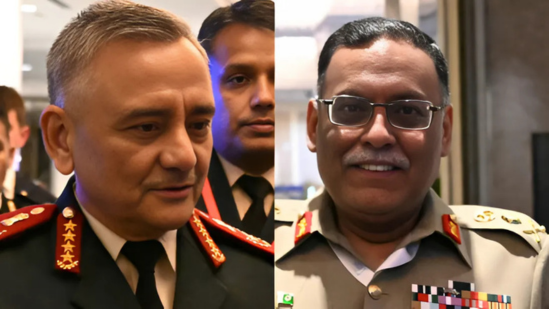
Tensions between India and Pakistan increased on a global stage during the Shangri-La Dialogue 2025 held in Singapore, as senior military officials from both nations exchanged strong words. The clash began when India’s Chief of Defence Staff (CDS), General Anil Chauhan, gave a warning about the ‘red line’ India has drawn on terrorism, clearly hinting at Pakistan. The statement triggered an immediate and sharp reaction from the Pakistani side, marking one of the most public confrontations between the two countries at an international forum.
The Shangri-La Dialogue is an important annual security summit that gathers defense ministers, military chiefs, and international experts to discuss regional and global security issues. Hosted by the International Institute for Strategic Studies (IISS) in Singapore, the forum is known for open and direct military diplomacy. This year, however, the dialogue witnessed a rare and intense India-Pakistan verbal clash, making headlines around the world.
In his speech, CDS General Anil Chauhan strongly emphasized India’s zero-tolerance policy on terrorism. He said that India has drawn a clear red line regarding terrorism, and if that line is crossed again, India will take strong military action as it has done in the past. This was a clear reference to India’s past surgical strikes and the Balakot airstrikes, which were carried out in response to terrorist attacks from across the border. His statement made it clear that India holds Pakistan responsible for supporting cross-border terrorism through various militant groups.
In response, a Pakistani military official present at the summit rejected India’s accusations and said that Pakistan does not sponsor terrorism. The official accused India of trying to politicize the platform and claimed that Pakistan itself is a victim of terrorism. He also brought up the issue of human rights in Kashmir, accusing India of serious violations. The official insisted that dialogue, not threats, should be the way forward and called India’s remarks “unhelpful” for regional peace.
This public exchange is important for several reasons. First, it happened in front of a global audience, including diplomats and military leaders from the United States, China, Japan, Australia, and other major powers. Second, it shows the rising tensions along the Line of Control (LoC) in Jammu and Kashmir, where both armies continue to stay alert. And third, it suggests that future peace talks between India and Pakistan may be even more difficult due to these strong public statements.
India has long maintained that terrorism is the biggest threat to peace in South Asia. The Indian government and security agencies have blamed Pakistan’s Inter-Services Intelligence (ISI) for helping terror groups like Jaish-e-Mohammed (JeM), Lashkar-e-Taiba (LeT), and Hizbul Mujahideen operate inside Indian territory, especially in Kashmir. In recent years, India has carried out military strikes in response to deadly terror attacks, and these actions have been presented as a clear warning to Pakistan.
On the other hand, Pakistan always denies these allegations and says it is also fighting terrorism within its own borders. Pakistani officials often point to bombings and attacks on their own soil, blaming them on extremist groups. However, many international reports and Indian intelligence agencies continue to suggest that Pakistan-based groups operate freely and receive protection from the state. Organizations like the Financial Action Task Force (FATF) have also kept Pakistan on a grey list, demanding action against terrorist financing.
While China, a close ally of Pakistan, stayed neutral and called for regional peace and stability, the United States showed partial support for India’s concerns. A U.S. official at the dialogue said that South Asia remains a nuclear flashpoint, and the situation calls for dialogue and de-escalation. The statement reflected Washington’s desire to avoid conflict between two nuclear-armed neighbors while recognizing the seriousness of the terrorism issue raised by India.
The Indian media widely covered General Chauhan’s strong words and praised the military for standing firm against terrorism. On social media, Indian users supported the statement using hashtags like #RedLine, #IndiaPakistan, #CDSChauhan, and #ShangriLaDialogue. In Pakistan, the media portrayed India’s actions as an attempt to “defame” their country. The public reaction was mixed, but many felt the situation highlighted the deep mistrust between the two countries.
This latest exchange has serious implications for the future. India and Pakistan have a long history of military conflict and diplomatic breakdowns. From the Kargil War to the Pulwama attack, relations between the two have been strained for decades. The ‘red line’ warning by CDS Chauhan suggests that India is prepared to take more decisive actions if provoked again. It also shows that India is now using international forums to raise security concerns and put pressure on Pakistan publicly.
Experts believe that this move by India was carefully planned. According to defense analysts, India wants the international community to recognize terrorism as a global problem, especially when it is supported by state actors. Some believe that Pakistan may now face more diplomatic pressure to show real results in counter-terrorism efforts. Others say that India’s bold statement may improve its image as a responsible power that is firm on security matters.
The verbal clash between Indian and Pakistani generals at the Shangri-La Dialogue 2025 is more than just a war of words. It reflects the ongoing security challenges in South Asia, the lack of trust between India and Pakistan, and the growing use of global platforms to raise regional issues. As both countries remain strong in their positions, the risk of further military tension cannot be ignored. The international community must now focus on promoting real dialogue and stopping terrorism at its root to avoid another conflict in this volatile region.































